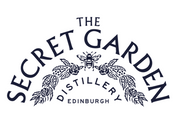May in the Garden: A Tribute to Our Bees
By Erika, Head Gardener
As it's just been World Bee Day, I’d love to dedicate this month’s blog post to our wonderful pollinators. They’re the unsung heroes of the garden—busy, buzzy and utterly vital to everything we do here at the distillery.

We’re lucky to have an abundance of pollinators in our garden, including a delightful variety of bumblebees, butterflies, hoverflies, and of course, our very own honeybees. You’ll see them darting from bloom to bloom, doing the important work of ensuring the health of both our plants and our planet.
We make lots of conscious decisions to support their wellbeing. One of the key things is making sure our flowering season stretches as long as possible. By growing a wide range of plants that flower at different times, we make sure there’s always something in bloom to feed the pollinators—whether it’s early spring or the tail-end of autumn.
At the moment, some of their favourite spots are in the polytunnel next to our little juniper woodland. The nepeta (catmint) is in full flower and positively humming with activity, as are the different thymes. It's a joy to walk through and hear the low, contented buzz of happy bees.
 .
. 
Just the other day, a visitor asked me why we let our rhubarb bolt. It’s a great question! Most people cut down the flower stalks early to encourage more edible stems. But here, we let them bloom—for the bees. Rhubarb flowers early, and though they’re often unseen, they’re a valuable early nectar source when little else is flowering. In our garden, the pollinators come first, so we’re happy to trade a few stems for their wellbeing.

Another key part of our approach is growing native wildflowers. These are the plants our local pollinators have evolved alongside, so they’re perfectly suited to each other. Many of these also feature in our award-winning Wild Gin, which celebrates the flavours and resilience of wild and native plants—benefiting both biodiversity and our botanical creativity.
Of course, we’re firmly pesticide-free. We want our garden to be a safe haven, not only for pollinators but for all wildlife. That’s why we also leave plenty of wild areas around the garden—what we call “wild corridors.” These strips between the cultivated areas are planted with native trees and left largely untouched, allowing grasses, wildflowers, and other plants to thrive. They provide food, shelter, and nesting places for countless insects and small creatures.
If you’re visiting us soon, I highly recommend taking a little detour through these wilder patches—there’s always something beautiful to see if you take a moment to slow down and look closely.
Here’s to our bees—and to gardening in harmony with the wild.
Warm wishes,
Erika 🌿🐝








Leave a comment